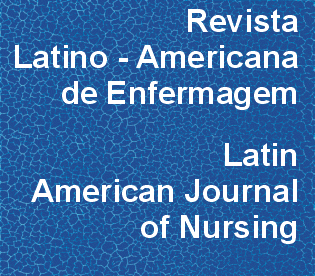Evaluación microbiológica de las diferentes formulaciones antisépticas, polivinil-pirrolidona-yodo y clorexidina, después de la contaminación intencional de los recipientes
DOI:
https://doi.org/10.1590/S0104-11692008000600016Palabras clave:
agentes antiinfecciosos locales, contaminación, infección hospitalarResumen
Los objetivos de este estudio fueron evaluar la sobre vivencia de los micro organismos en las diferentes formulaciones de los antisépticos clorexidina (CHX) y polivinil-pirrolidona-yodo (PVP-Y), después de una contaminación intencional de los recipientes y extrapolar los resultados de los laboratorios para el cuidado mínimo a ser dispensado a los recipientes de múltiple uso para el envase de los antisépticos probados. Para esto, fue desarrollado un estudio de laboratorio, en que 180 recipientes fueron contaminados con 1 x 105 UFC/mL de suspensión conteniendo S.marcescens. Después de la contaminación, seis diferentes formulaciones de antisépticos (clorexidina y PVP-Y en los vehículos alcohólico, detergente y acuoso) fueron distribuidos y sometidos a la cultura diaria durante siete días, a fin de verificar se hubo crecimiento del microorganismo. Los resultados de esta investigación permiten recomendar la limpieza como el procedimiento mínimo en el procesamiento de esos recipientes que garantiza la seguridad de su utilización repetida para distribución de los antisépticos que fueron sometidos a prueba - CHX y PVP-Y.Descargas
Los datos de descarga aún no están disponibles.
Descargas
Publicado
2008-12-01
Número
Sección
Artículos Originales
Licencia
Los derechos de autor son propiedad exclusiva de la Revista Latino-Americana de Enfermagem (RLAE), transferidos a través de la Declaración de Transferencia de Derechos de autor (que está en el formulario individual de declaración) firmada por los autores. Para el uso de artículos, RLAE adopta la Licencia Creative Commons CC BY-NC atribución no comercial (abstracto o código completo de licencia). Con esta licencia es permitido acceder, descargar (download), copiar, imprimir, compartir, reutilizar y distribuir los artículos, desde que para uso no comercial y con citación de la fuente, dando los créditos de autor a la Revista Latino-Americana de Enfermagem. En tales casos, no se necesita permiso de los autores o editores.Cómo citar
Padovani, C. M., Graziano, K. U., & Goveia, V. R. (2008). Evaluación microbiológica de las diferentes formulaciones antisépticas, polivinil-pirrolidona-yodo y clorexidina, después de la contaminación intencional de los recipientes. Revista Latino-Americana De Enfermagem, 16(6), 1038-1041. https://doi.org/10.1590/S0104-11692008000600016



